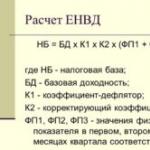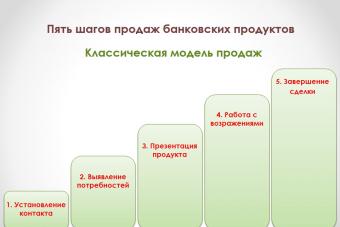The victory in the Second World War was not easy for people. Until now, the fate of thousands of people has not been clarified, and the search for the dead soldiers is being carried out.
To organize such work, the President of the Russian Federation issued a system of instructions.
In accordance with the list of instructions of the President of the Russian Federation on the organization of memorial works in Russia and the decree on perpetuating the memory of the dead, the Ministry of Defense created a system of generalized computer banks that contain information about the missing or dead.
Work on the project was launched in the year two thousand and three, and it was opened for full use in the year two thousand and seven.
Today, approximately fourteen million documents have been scanned on this server.
The main objective of the project is to enable citizens to determine the fate or search for information about deceased relatives and determine the place of burial.
Important! The rear of the Armed Forces of the Russian Federation and the Military Memorial Center carried out work that is unique in terms of scale and technology. This helped to create a global information and reference system, which has no analogues anywhere else.

As already mentioned, on this site you can find the necessary information about the burials, which you can compare and clarify its reliability from primary sources.
Also, due to the wide access to information about the dead soldiers, it is possible to document the falsification of historians regarding losses.
In the future, this resource is planned to find information about soldiers who died in other wars of the twentieth century.
In this case, information from Russian archives will be used.
Also, over time, supplementary documentation from various Russian archives will be added to the site, as well as information on all personalities from the existing arrays will be combined.
In addition to loss reports, passports from burials, as well as documentation of captured military personnel, will be used for this.
To search for the necessary information, additional documentation is often used, for example, door-to-door surveys of funerals or decrees.
Important! Over time, it is planned to create an information and analytical system in order to analyze the available data.

How to find the dead and missing?
Finding information about the dead is very simple:
- Go to the central archive memorial.ru.
- Enter the initials and date of birth of the deceased relative.
- As a result, the user will receive data from two lines with basic information. Further, you can continue to study the materials to find out the exact place of burial.
- In the initials, change the letters as if they were written by an illiterate person or the original documentation is hard to read. This will help you stumble upon additional documentation from archived data.
At this stage of the search, it is enough to indicate the title, initial and date of birth. Of course, if a relative has common initials, it will be much more difficult.
After all, you will have to show a lot of perseverance to find out what exactly this person is needed.
The search may require additional details, for example, the initials of the wife, the city in which the relative was born (it is worth remembering the administrative division of the USSR in the pre-war period).
Important! If the user specified everything correctly, then he will receive documentation about the burial of relatives and information about which division or regiment, for example, his great-grandfather fought in.
If information is missing, hope that the search party will find what you need.


Search fields
To search for the necessary information, a string is used, thanks to which a full-text search is carried out.
You can also enter the search word in such a column. The number of fields depends on the search areas selected at a certain moment.
Among the advantages of searching by fields, it is worth highlighting the fact that such a search works much more accurately than its full-text counterpart, because the search for entered words is performed only in the specified columns.
However, it is worth remembering that this search option can be very slow.
To the left of the field, you can find several query modes.
If necessary, users can vary them in the following options:
1. From the initial fields - to search for a quick search for a record where the information in the column matches the entered data.
2. From the exact field - to find records in which the information in the fields matches the entered data.
3. Using exact matches, you can find information where the field values in any places can contain words in the specified order.
4. Due to the presence of full-text search, you can find records where at least one entered word is indicated in the fields.
Important! Below these fields is a button for searching and clearing. To find a search, the user can also press the Enter button.

Search by last name
Speaking about the search by last name, it is worth saying that the search area allows you to hide or display certain information.
It is determined by the subset of documents to search.
When the user has not clicked on a specific option, the search will be performed on the summary entry.
However, in the query string, you can select, for example, the last name by going into the fields for a full search.
At the same time, remember that the computer will issue all records with the words present in the request. They will appear in a custom field.
In other words, if, for example, the user entered the surname Nikolaev, then the query will include not only information about people with this surname, but also about everyone who was born in the city with the same name.
Therefore, the best option is to ask a request not only with the last name, but also with the first and middle name.
So that the search result does not include records from the documentation where the initials are not fully indicated.
Important! Not all data for the search was included in the database. So if a query doesn't get the information you want, simplify it and try again.
Do not forget that the search is case-insensitive, that is, the system does not distinguish between capital letters.

How to enter the resource?
You can access this resource as follows: if you have not registered, first click "register" and enter the necessary information, that is, your email address, your initials, and also come up with a login that will be used to enter.
You will also need to enter information such as the organization in which you work, your position.
During the initial registration, you will need to come up with a strong password and confirm it by entering it again.
Upon completion of registration, the user will receive an email with a confirmation link.
After successful registration, you can log in. To do this, click on the “login” button and enter your login or email address to which the user page is linked.
You will also need to enter a password. After entering the required information, click "login".
If you notice that the login or password is incorrect, then click "cancel" and re-enter the required information.
Important! It often happens that the user has forgotten the password. In this case, click "recover password".
In the window that appears, you need to enter your email address specified during registration so that the user receives a link to reset the password.

How to use the system?
In this system, you can search for information in the summary record of all documentation for the following items:
1. In information about losses (irretrievable);
2. In documentation from military hospitals;
3. In certificates of losses;
4. In the list of names of burials;
5. In the lists of prisoners of war;
6. In delisting decrees;
7. In the filing cabinet.
You can also search for information in the following lists of documents:
- Electronic memory books;
- Printed memory books;
- Texts of the printed memory book;
- Search for existing graves;
- Exhumation protocol.
You can also look for information at military transit points.
To do this, you need to specify the following data: the initials and date of birth of the relative, as well as the name of the military unit and military rank.
Information can be specified in an exact phrase or field, or in a full-text list.
In addition, enter the date and place of arrival, as well as when and where the relative left. It is also required to enter the address where the person left the place of military service.
For accurate information, be sure to include his team number.
Important! After entering the required information, click search. Before doing this, be sure to check the accuracy of the entered information. If you notice an error, click clear, erase the incorrect information and enter the exact data in the column.

Attention! All information on this website is provided for informational purposes only. The site does not collect and process personal data. Federal Law of July 27, 2006 N 152-FZ "On Personal Data" is not violated.
To organize in archivessearch for dead and missing in the Second World War 1941-1945 relatives by last name is necessary
1) Collect as much information as possible about the wanted front-line soldier (last name, time / place of birth; region of conscription into the army; place (s) of service; branch of service; number (s) of the unit (s); any official and unofficial hit notifications captured; field mail numbers from sent letters, etc.)
2) Apply with all these data to the Internet sites:
a) a thematic resource of the Ministry of Defense called "United Data Bank "Memorial"" *. Address: www.obd-memorial.ru
b) electronic bank "Feat of the people in the Second World War 1941-45."
Includes numbers and texts of award orders. Address: http://podvignaroda.mil.ru/?#tab=navHome.
c) "Memory of the people"
This resource contains information about the locations of military units at all stages of the Second World War. Address: https://pamyat-naroda.ru/.
d) "Immortal Regiment"
The sites of the public initiative moypolk.ru and polkrf.ru allow you to search for front-line soldiers in their own database, publications in the media, order numbers, archival documents, stories of WWII participants, etc.
3) Send requests to search for a missing person in the Second World War to unofficial archives and databases collected by public figures (you can find the names of those using Yandex and any other search engine).
4) Contact specialized archives (the capital's State Military Archive and / or similar archives of the former Soviet republics; archives of law enforcement agencies, etc.). When visiting a selected archive in person, you may need to make a statement indicating your personal data, the purpose of collecting information and an approximate list of requested documents.
5) Send a request for the search for the dead and missing in the Second World War of 1941-1945 to the archives of Germany and the countries in whose territory hostilities were fought. The main building of the German Federal Archives is based in Kobletz, and the largest branches are in Freiburg, Berlin and other cities.
6) Contact the local archives of German cities and lands (Dresden Documentation Center under the organization "Saxon Memorials", etc.)
7) If there is information about the approximate place of death of the wanted relative, contact local military-patriotic detachments, a list of which is available on the Sporf.ru resource (subsection "Region. Representatives").
Algorithm for finding a missing relative
The more data is known about the front-line soldier, the easier it is. Ideally, in addition to the full name of the person you are looking for, it is desirable to have information about the place of his birth, the date and place of conscription, the number of the military unit, etc. As a result of the analysis of documents provided by online resources, one can track the life path of an ancestor. For example, information from award documents will allow you to find out about the feats committed by a relative, the address of the family during the Second World War, etc.
"Missing"
Such a wording in the search results should in no case be the basis for terminating the search. According to the documents about the places of service, you can "calculate" the fellow soldiers of the hero and learn from them the details of the fatal battle. There are cases when fighters who lost their memory "surfaced" under other names. The main thing is not to stop searching, using any, even the most insignificant, "hooks".
It would not be superfluous to establish contacts with representatives of search parties (personal items and remains found by them often allow shedding light on events of interest).
It is important to remember that the fighters who were taken prisoner were recorded among the missing. To search in this direction, it is advisable to contact the Russian Ministry of Defense and the German Documentation Center located in Dresden, where data on citizens of the Soviet Union captured by the Nazis are collected.
How to act in case of failure
Consult with like-minded people and people who have been searching for a long time. From them you can find out the addresses of thematic forums and social networks (some sites are entirely devoted to discussing the front-line life of specific units and formations). The forum of the All-Russian Genealogical Tree website contains links to a great many links and archives, request forms to various departments, search recommendations, etc.
OBD "Memorial"
* The generalized computer data bank "Memorial" is an information archive created by presidential order No. pr-698 dated April 23, 2003 with information about the defenders of the Motherland, the fallen and missing during the Second World War (1941-1945) and the post-war period.

The mission of the OBD "Memorial" project is to provide citizens with the opportunity to establish the fate and places of burial / captivity / loss of their relatives.
The formation and content of the site www.obd-memorial.ru is carried out by the specialists of the corporation "ELAR".
Data on the soldiers of the Red Army and partisan detachments were collected by employees of the Logistics Service
- - departmental archives (Navy, Air Force, Ministry of Defense, Ministry of Internal Affairs, KGB/FSB);
- - branches of the Russian State Military Archive;
- - branches of the State Archives of the Russian Federation;
- - specialized departments of the Ministry of Defense;
- - open sources (newspaper publications; data of postal correspondence; reports of irretrievable losses; documentation of medical battalions and hospitals; trophy cards of prisoners of war; burial passports, etc.).
The result of this interaction was the creation of a global (and regularly updated) information and reference system with more than 13.4 million digitized pages of archival documents and 42,000 burial passports. OBD "Memorial" - the largest electronic archive missing World War II soldiers war in the world.
On Obd-memorial.ru, millions of scanned copies of primary documentary sources with information about personalities are available for study. Portal visitors can search for the necessary information about veterans online. Access to the portal is open 24 hours a day.
The search for the missing participants in the Great Patriotic War of 1941-1945 can be done on sites (addresses are indicated above), which have solid databases with the names of fallen soldiers found by search teams. To submit a request, you will need to enter your full name and, if possible, additional information about the wanted person (his age, rank, military awards, etc.). The databases on these portals are constantly updated, so a negative result of the first attempt may turn into a positive one after some time.
An alternative to these sites can be an appeal to regional military-patriotic clubs, the coordinates of which can be found on the Web. The search engines will add a photo of the missing relative with the personal data of the deceased to a common database, after which the same enthusiasts across the country will connect to the search for a fighter.
And finally, you can write (call) to the program "Wait for me", the organizers of which are looking for missing soldiers all over the planet. To get into the database of the project, you will need to fill out a questionnaire on the portal "Poisk.vid.ru". The more information about a missing relative is known, the higher the likelihood of establishing information about him. Search activities begin immediately after the receipt of the questionnaire. According to statistics, Wait for Me employees search weekly for information about several dozen people, about a third of whom are ordinary soldiers, officers and partisans who did not return from the war.
Attention! Due to the large number of incoming applications, processing of new requests is temporarily suspended. You can search on your own in the databases "Memorial" (obd-memorial.ru), "Feat of the people" (podvignaroda.ru) and "Memory of the people" (pamyat-naroda.ru) - the search for them is absolutely free.
Not everyone returned from the front in 1945, the ancestors of many of us are still listed as missing. But we continue to look for those who gave their lives for us and gave us a clear sky above our heads.
Memorial
Thanks to the document, you can find out when and where the participant of the Great Patriotic War died, as well as the primary place of burial and the place of reburial (if any).
Memory of the People
If your relative is listed as missing, you can search for information about his fate in the database of Soviet prisoners of war by fascist Germany.

What I managed to find: by querying Google “Station Myshbor War”, I managed to find information that Batukhtin Mikhail Vasilyevich fell in battle with German bombers on August 16, 1942 near the Myshbor railway station. From report No. 24967 on irretrievable losses dated September 22, 1942, we learn that 8 soldiers were killed during the bombardment. All of them, including my great-grandfather, were buried here. Unfortunately, the mass grave could not be found on the Internet.
Maria Batukhtina
Database
www.podvignaroda.ru
www.obd-memorial.ru
www.pamyat-naroda.ru
www.rkka.ru/ihandbook.htm
www.moypolk.ru
www.dokst.ru
www.polk.ru
www.pomnite-nas.ru
www.permgani.ru
fatherland.rf, rf-poisk.ru
rf-poisk.ru/page/34
soldat.ru
memento.sebastopol.ua
memory-book.com.ua
soldat.ru - a set of directories for self-search of information about the fate of military personnel (including a directory of field postal stations of the Red Army in 1941-1945, a directory of conditional names of military units (institutions) in 1939-1943, a directory of the deployment of hospitals of the Red Army in 1941-1945 years);
www.rkka.ru - a directory of military abbreviations (as well as charters, instructions, directives, orders and personal documents of wartime).
Libraries
oldgazette.ru - old newspapers (including the war period);
www.rkka.ru - description of military operations of the Second World War, post-war analysis of the events of the Second World War, military memoirs.
military cards
www.rkka.ru - military topographic maps with combat situation (by periods of war and operations).
Search engine sites
www.rf-poisk.ru is the official website of the Russian Search Movement.
Archives
www.archives.ru - Federal Archival Agency (Rosarchiv);
www.rusarchives.ru - branch portal "Archives of Russia";
archive.mil.ru - Central Archive of the Ministry of Defense;
rgvarchive.ru
rgaspi.org
rgavmf.ru - Russian State Archive of the Navy (RGAVMF). The archive stores documents of the Russian Navy (end of the 17th century - 1940). Naval documentation of the period of the Great Patriotic War and the post-war period is stored in the Central Naval Archive (TsVMA) in Gatchina, which is under the jurisdiction of the Ministry of Defense of the Russian Federation;
victory.rusarchives.ru - a list of federal and regional archives of Russia (with direct links and descriptions of collections of photographic and film documents from the period of the Great Patriotic War).
Partners of the Victory Stars project
www.mil.ru - Ministry of Defense of the Russian Federation.
www.histrf.ru - Russian Military Historical Society.
www.rgo.ru - Russian Geographical Society.
", "Russian Female");" type="button" value="(!LANG:🔊 Listen to news"/>!}
Database
www.podvignaroda.ru - a publicly available electronic bank of documents on awardees and awards during the Great Patriotic War of 1941-1945;
www.obd-memorial.ru - a generalized data bank on the defenders of the Fatherland, who died and went missing during the Great Patriotic War and the post-war period;
www.pamyat-naroda.ru is a public data bank about the fate of the participants in the Great Patriotic War. Search for places of primary burials and documents about awards, about service, about victories and hardships on the battlefields;
www.rkka.ru/ihandbook.htm - awarded the Order of the Red Banner in the period from 1921 to 1931;
www.moypolk.ru - information about the participants of the Great Patriotic War, including home front workers - the living, the dead, the dead and the missing. Collected and replenished by participants of the all-Russian action "Immortal Regiment";
www.dokst.ru - information about those who died in captivity in Germany;
www.polk.ru - information about Soviet and Russian soldiers who went missing in the wars of the 20th century (including the pages "The Great Patriotic War" and "Undelivered awards");
www.pomnite-nas.ru - photographs and descriptions of military graves;
www.permgani.ru - database on the website of the Perm State Archive of Recent History. Includes basic biographical information about former Red Army servicemen (natives of the Perm Territory or those called up for military service from the territory of the Kama region), who during the Great Patriotic War were surrounded and (or) captured by the enemy, and after returning to their homeland underwent a special state check (filtration);
fatherland.rf, rf-poisk.ru - electronic version of the book "Names from Soldiers' Medallions", volumes 1-6. They contain alphabetical information about those who died during the war years, whose remains, discovered during the search work, were identified;
rf-poisk.ru/page/34/ – memory books (by regions of Russia, with direct links and annotations);
soldat.ru - books of memory (for individual regions, military branches, individual units and formations, about those who died in captivity, those who died in Afghanistan, Chechnya);
memento.sebastopol.ua - Crimean virtual necropolis;
memory-book.com.ua - electronic memory book of Ukraine;
soldat.ru - a set of directories for self-search of information about the fate of military personnel (including a directory of field postal stations of the Red Army in 1941-1945, a directory of conditional names of military units (institutions) in 1939-1943, a directory of the deployment of hospitals of the Red Army in 1941-1945 years);
rgvarchive.ru - Russian State Military Archive (RGVA). The archive stores documents on the combat operations of the Red Army units in 1937-1939. near Lake Khasan, on the Khalkhin Gol River, in the Soviet-Finnish war of 1939-1940. Here are documents of the border and internal troops of the Cheka-OGPU-NKVD-MVD of the USSR since 1918; documents of the Main Directorate for Prisoners of War and Internees of the Ministry of Internal Affairs of the USSR and institutions of its system (GUPVI of the Ministry of Internal Affairs of the USSR) for the period 1939-1960; personal documents of Soviet military leaders; documents of foreign origin (trophy). On the website of the archive you can also find guides and reference books that make it easier to work with it.
rgaspi.org - Russian State Archive of Socio-Political Information (RGASPI). The period of the Great Patriotic War in RGASPI is represented by the documents of the emergency body of state power - the State Defense Committee (GKO, 1941-1945) and the Headquarters of the Supreme Commander;





